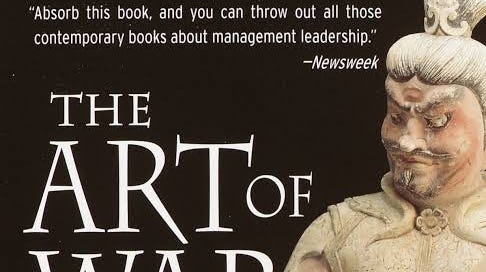The Art of War is an ancient Chinese military treatise attributed to Sun Tzu.
It is a classic work on strategy and tactics, and is still widely studied and applied today in fields such as business and sports.
The Art of War emphasizes the importance of understanding the enemy and the environment, and using flexibility and deception to achieve victory.
This would be helpful to introduce a young child or someone who has little knowledge of competition.
Game theory and “art of war” are widely used in the field of military and business.
Game theory provides mathematical models to analyze the decision making while Art of War is more of a practical guide to the strategy and tactics.
A version of an ABCs book that explains different principles from The Art of War:
A is for Agility. The ability to adapt to changing circumstances and respond quickly to opportunities and threats.
B is for Balance. Maintaining balance between offense and defense, and between action and caution.
C is for Control. Control of the battlefield, the enemy's forces, and the enemy's mind.
D is for Deception. Using false information and feints to mislead the enemy and gain an advantage.
E is for Economy of force. Using only the minimum necessary resources to achieve a goal, while preserving the ability to respond to other threats.
F is for Flexibility. Being able to change plans and tactics in response to the enemy's actions.
G is for Generalship. The ability to lead and command troops, and to make effective decisions in the heat of battle.
H is for Initiative. Taking the initiative in battle and maintaining it throughout the engagement.
I is for Intelligence. Gaining knowledge of the enemy's plans, strengths, and weaknesses.
J is for Joint operations. Coordinating the actions of different units and branches of the military to achieve a common goal.
K is for Knowledge. Knowing yourself and your enemy is the key to victory.
L is for Leverage. Using the enemy's strengths and weaknesses to your advantage.
M is for Mass. Concentrating your forces at the right time and place to achieve a decisive advantage.
N is for Navigation. Knowing the terrain and how to use it to your advantage.
O is for Objective. Having a clear and achievable goal in battle, and working towards it relentlessly.
P is for Planning. Developing a strategy and tactics before the battle, and adjusting them as necessary during the battle.
Q is for Quickness. Acting quickly and decisively to take advantage of opportunities and avoid threats.
R is for Resilience. Being able to recover quickly from setbacks and continue to fight effectively.
S is for Simplicity. Keeping plans and tactics simple and easy to execute, in order to minimize confusion and mistakes.
T is for Training. Preparing your troops for battle through rigorous training and drills.
U is for Unity. Maintaining unity and cohesion among your troops, and between different units.
V is for Victory. The ultimate goal of warfare, achieved through skillful strategy and tactics.
W is for Weather. Understanding and using the weather to your advantage.
X is for eXploit. Taking advantage of opportunities to defeat the enemy.
Y is for Yielding. Knowing when to retreat and when to stand firm, and adapting to the ebb and flow of battle.
Z is for Zeal. Maintaining a strong will to win and the determination to see it through to the end.
The Art of War is an ancient book that covers strategy, tactics, and how to win wars, it is still widely studied and applied today in fields such as business and sports.
The book emphasizes the importance of understanding the enemy and the environment, and using flexibility and deception to achieve victory.
Hopefully this is something that you can use to start teaching youth about the realities of life and frameworks for life.
Stay strong,





